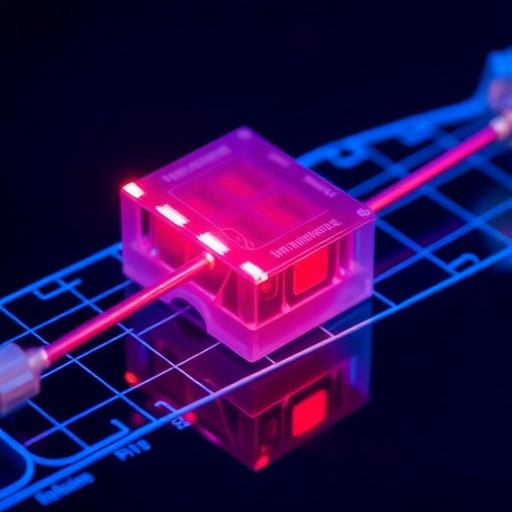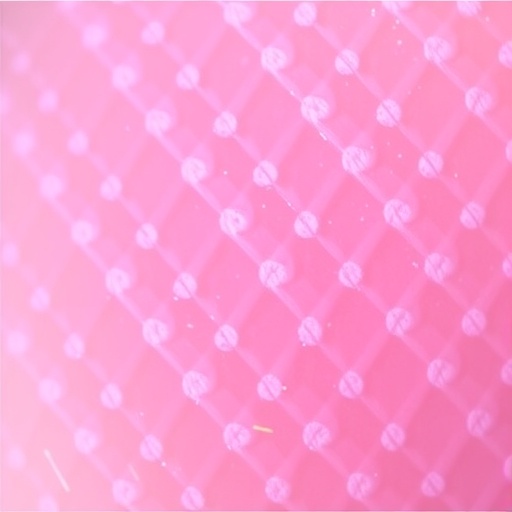
In an era where advancements in medical technology are paramount, the recent study conducted by Fukuhara and Yamamoto presents a groundbreaking innovation in blood volume monitoring within venous reservoirs. This methodology, harnessing the precision of a laser displacement sensor, marks a significant leap forward in the management of blood volume, a crucial variable in numerous medical treatments and surgical procedures.
The innovative approach detailed by the researchers involves the application of laser technology to accurately measure the distance to the blood surface in a venous reservoir. This development not only enhances the reliability of blood volume assessments but also minimizes the risks associated with traditional monitoring techniques, which can often yield inconsistent results due to their invasive nature. The implications of such a non-invasive measuring technique are vast, particularly in the context of patient safety and overall clinical outcomes.
One of the primary challenges in blood volume monitoring lies in the inherent difficulties of obtaining precise measurements in a dynamic system such as the human circulatory system. The researchers tackled this issue by employing a laser displacement sensor, which operates on the principle of light reflection. By measuring the time it takes for laser light to travel to the blood surface and back, the sensor can calculate the distance accurately, thereby providing real-time data on blood volume levels in the reservoir.
The technical specifications of the laser displacement sensor used in this study are exemplary. It boasts a high resolution and sensitivity, capable of detecting even minimal changes in blood levels. This precision is particularly vital in clinical environments where the timely adjustment of blood volume can mean the difference between life and death. Furthermore, the system’s ability to operate continuously allows for uninterrupted monitoring, which is essential during surgeries where blood loss can occur rapidly.
In this study, Fukuhara and Yamamoto conducted a series of experiments to validate the reliability and accuracy of their blood volume monitoring technique. The results were promising, indicating a strong correlation between the laser measurements and the actual blood volume within the venous reservoir. These findings suggest that the new approach could soon become a standard practice in operating rooms around the world.
Another noteworthy aspect of this research is its potential for widespread applicability beyond the confines of surgical settings. For instance, this technology could also be beneficial in emergency medicine, where rapid assessment of blood volume can aid in the immediate treatment of trauma patients. Similarly, in intensive care units, where patients are often monitored for prolonged periods, the laser displacement sensor could provide a consistent and reliable method to assess blood volume fluctuations.
The implications of this technology also extend to the field of artificial organs, particularly in the development of bio-artificial systems that rely heavily on accurate blood volume management. As researchers strive for increasingly sophisticated artificial organs, incorporating such precise monitoring systems could significantly enhance their functionality and efficacy.
Moreover, the integration of this technology with existing medical devices could pave the way for smarter healthcare solutions. By connecting the laser displacement sensor to a monitoring system that tracks various physiological parameters, healthcare providers could gain holistic insights into a patient’s condition, thus facilitating more informed decision-making in real time.
The researchers also addressed the potential limitations of their study, emphasizing the need for further testing in diverse clinical scenarios. While the initial results are encouraging, conducting trials across varying patient populations and surgical procedures will be critical in confirming the robustness and reliability of this new blood volume monitoring technique.
In addition, the researchers suggest that future studies could explore the integration of this technology with artificial intelligence and machine learning algorithms. Such advancements could enable predictive modeling of blood loss and volume changes, allowing healthcare providers to anticipate patient needs more effectively.
As this technology progresses, considerations around user interface and ease of integration into existing medical infrastructures will also be pivotal. Simplifying the interface for clinicians and ensuring the system can be effortlessly adopted into routine practice will significantly enhance its potential for widespread use.
The excitement surrounding this research highlights a fundamental truth in the healthcare industry: innovation is key to improving patient outcomes. With studies like this paving the way for new techniques and technologies, the potential for enhancing surgical precision and safety has never been greater. As the medical community observes and builds upon this novel approach, the prospects for future advancements continue to expand.
In conclusion, Fukuhara and Yamamoto’s study represents a pivotal moment in the evolution of blood volume monitoring technologies. By employing laser technology to facilitate precise and non-invasive measurements, this research lays the groundwork for significant advancements in patient care and clinical procedures. As we move forward, the healthcare community must remain attuned to such innovations, embracing the potential they hold for transforming medical practices.
The path ahead is clear: with continued research and development, the integration of cutting-edge technology into everyday medical practices ideals will not only enhance patient safety but also redefine the standards of care in the medical field.
Subject of Research: Blood Volume Monitoring
Article Title: A novel blood volume monitoring approach in a venous reservoir using a laser displacement sensor for blood surface distance measurement.
Article References: Fukuhara, S., Yamamoto, Ki. A novel blood volume monitoring approach in a venous reservoir using a laser displacement sensor for blood surface distance measurement. J Artif Organs 28, 365–373 (2025). https://doi.org/10.1007/s10047-025-01505-y
Image Credits: AI Generated
DOI: https://doi.org/10.1007/s10047-025-01505-y
Keywords: Blood volume monitoring, laser displacement sensor, venous reservoir, non-invasive measurement, surgical procedures, medical innovation.
Tags: advancements in blood managementchallenges in blood volume measurementclinical outcomes improvementFukuhara and Yamamoto research studyinnovative surgical monitoring techniqueslaser blood volume monitoringlaser displacement sensor applicationslight reflection technology in medicinenon-invasive medical technologypatient safety in medical proceduresprecision measurement in healthcarevenous reservoir blood assessment




